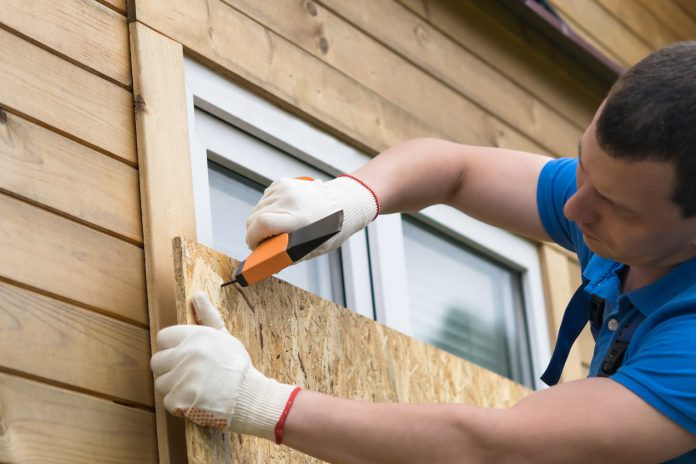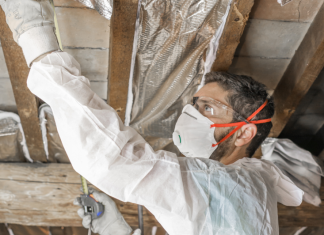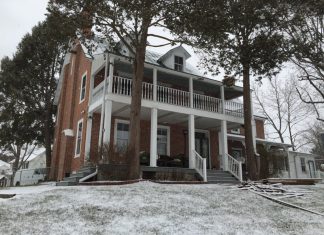Extreme cold can turn your cozy home into a danger zone if you’re not prepared. Did you know winter cold weather-related fatalities were among the highest causes of death in 2022? It’s crucial to take proactive steps to safeguard your home and family from the harsh effects of an arctic blast.
I’ve learned that simple measures like wrapping exposed water pipes with insulation and keeping faucets running at a steady trickle can prevent costly damages and ensure your safety. Leaving cabinets open under sinks to circulate warm air and using space heaters correctly are also key strategies. By preparing ahead of time, you can keep your home safe and warm, even when the temperature plummets.
Assessing Your Home’s Vulnerability to Extreme Weather
Identifying Weak Points
Evaluate every part of your home‘s structure to spot areas susceptible to severe weather. Inspect windows and doors for drafts, addressing any detected leaks with caulking or weatherstripping. Often, gaps around doors and windows let heat escape, which impacts energy efficiency and comfort.
Examine your roof condition carefully. Look for loose or missing shingles and ensure flashing around chimneys is intact. Damaged roofs are common entry points for water, especially during heavy rain or snowstorms. It helps to assess nearby trees and their proximity to your house, as branches can fall and cause damage during storms.
Check your home’s foundation for cracks or settling, as these can allow water intrusion during flooding. Examine the gutter system thoroughly; clogged or damaged gutters can lead to water damage around your home’s exterior. Clear gutters and downspouts regularly to ensure proper water flow away from your foundation.
Prioritizing Repairs and Upgrades
Prioritize the most critical repairs to reduce your home’s vulnerability to extreme weather. Start with roof repairs, as a compromised roof can lead to significant water damage. Contact a professional to replace any damaged shingles or repair flashing around areas like chimneys and vents.
Upgrade windows to triple-pane models or those with low-emissivity (low-e) coatings if current windows are outdated. These enhance insulation and reduce energy loss. When window replacement isn’t feasible, consider insulating the current ones with honeycomb-style shades to improve thermal efficiency.
Focus on improving insulation for better protection against the elements. If you’re unsure how much insulation you need, consult industry guidelines or a professional. Adding insulation, particularly in attics and walls, can significantly enhance your home’s ability to maintain temperature and reduce energy costs.
Clear gutters and inspect for any damage to ensure they can handle heavy rainfall. Fix leaks and secure loose downspouts to prevent water damage. Regular maintenance of gutters is essential, especially if trees are nearby, as debris buildup can quickly obstruct water flow.
Electrical systems should be up-to-date to handle potential power surges from lightning strikes. Install grounding rods and use surge protectors to safeguard electronic devices. If your roof is the highest point of your property, installing lightning rods can prevent potential damage from strikes. Consulting a professional will help determine the number of rods needed and ensure proper installation.
By addressing these areas, you can significantly enhance your home’s resilience against extreme weather and protect your investment.
Structural Enhancements for Extreme Weather
Reinforcing Roof and Windows
Strengthening your roof and windows can significantly boost your home’s resilience against extreme weather. A well-maintained roof is crucial; ensure it’s free from damage and addresses weak areas promptly. If your roof is the highest point on your property, adding grounding rods helps prevent lightning strikes that can cause power surges and outages, damaging sensitive electronic devices like TVs, computers, and phones.
Windows are another critical area. Since they generally make up 8% of a house’s exterior surface but contribute to nearly half of the heat loss through basic conduction and air leakage, upgrading to triple-pane windows with low-emissivity coatings increases insulation capacity and reduces heat loss. If window replacement is too costly, installing honeycomb-style shades can lock in more heat and reduce energy transfer by 10-15% compared to vinyl slat blinds. For a quick fix, covering windows with blankets or quilts during storms adds an extra layer of insulation.
Waterproofing and Sealing Exteriors
Water damage can compromise a building’s structural integrity. Regular staining or painting creates a moisture barrier, and modern paints are more durable but need checking. Check vulnerable areas often to ensure elements like rain haven’t worn down the protection. Keep gutters clear and fix cracks in caulking to ensure they remain effective, especially if your area experiences heavy rain.
Properly attached and maintained gutters are vital. Overflow due to blockages or detached gutters can lead to significant water damage. Extend downspouts at least six feet from the foundation to minimize seepage risks. Annual trims for nearby trees reduce debris accumulation and potential damage.
Walk around your house periodically to inspect for cracks in masonry or stucco. Fill cracks immediately with mortar repair or sealant to prevent water ingress which can lead to severe issues like stone or tile facades popping off and damaging underlying structures. Addressing these areas ensures your home’s exteriors are well-protected from extreme weather.
Essential Supplies and Equipment
Backup Power Solutions
Ensuring a backup power source is crucial during extreme weather. A generator can provide electricity during outages, keeping essential systems running. Only use generators outdoors to avoid carbon monoxide poisoning. Ensure you have enough fuel stored in a safe location. Consider installing a permanent standby generator for automatic power restoration.
Emergency Kit Essentials
Emergency kits are critical for staying prepared. I recommend having a well-stocked emergency kit that includes:
- Flashlights: Essential for navigation during power outages.
- Extra Batteries: Ensure they fit all your devices.
- First Aid Supplies: Include bandages, antiseptics, and any necessary medications.
- Nonperishable Foods: Stock items like dry cereal, nuts, and protein bars.
- Water: Store at least one gallon per person per day for a minimum of three days.
- Emergency Heat Sources: Keep blankets and hand warmers for cold weather.
- Fire Extinguisher: Vital for extinguishing small fires.
Maintaining these supplies can make a significant difference during emergencies. Always check expiration dates and replace items as needed.
Weatherizing for Temperature Extremes
Insulating Against Cold Snaps
Insulating a home is crucial to keeping the cold out and maintaining a stable indoor temperature. Focus on insulating the attic, walls, and floors, as well as sealing any drafts from windows and doors. High-quality insulation materials make a significant difference. For those wondering, “how much insulation do I need,” the Department of Energy provides guidelines based on climate zones. Generally, aim for attic insulation with an R-value of 38 or higher and wall insulation with an R-value between 13 and 15 in colder regions.
Also, insulate exposed water pipes to prevent freezing. Use pipe sleeves to cover pipes in unheated spaces like basements and crawl spaces. Ensure that your home’s HVAC system is well-maintained and inspected annually. Install a programmable thermostat to better regulate indoor temperatures and reduce energy costs.
Cooling Strategies for Heat Waves
During heat waves, the goal is to keep the home cool without overburdening the air conditioning system. Start by ensuring your home is well-insulated to keep cool air inside. Use reflective window films or thermal curtains to reduce heat gain through windows. Install ceiling fans to improve air circulation.
Consider planting trees or installing awnings to provide natural shade and reduce direct sunlight entering the home. Ensure that your HVAC system is efficient and clean, with filters replaced regularly. For an extra layer of cooling, use portable fans or consider a whole-house fan to expel hot air from the attic.
Finally, check attic ventilation. Proper ventilation can prevent heat buildup, making cooling efforts more effective. Use cool roof materials or coatings to reflect more sunlight and absorb less heat, helping to maintain a lower indoor temperature.













